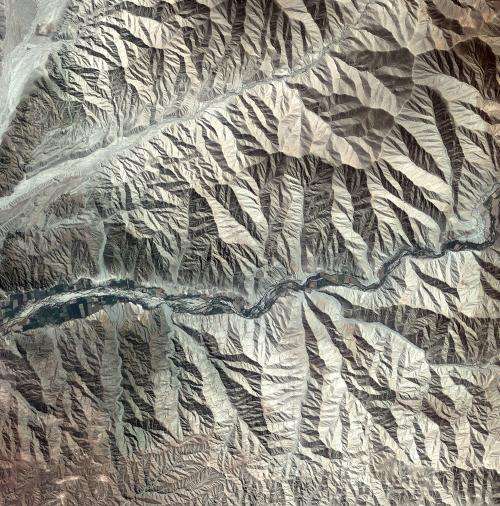Earth from Space: Peruvian landscape

The foothills of the Andes mountains near the southern coast of Peru are captured by the Kompsat-2 satellite.
The Andes stretch about 7000 km from Venezuela down South America's west coast to the top of Argentina. The mountain rage is the result of the Nazca and Antarctic tectonic plates moving under the South American plate – a geological process called 'subduction'. This process is also responsible for the Andes range's volcanic activity.
Running across the centre of the image we can see a patchwork of agricultural plots along what appears to be a source of water runoff from the mountains – although there looks to be little to no water present when this image was captured. This area is extremely dry, as evident in the sparse vegetation.
Nearby to the southwest of the area pictured is the site of the famous Nazca lines (not visible) – a group of geoglyphs depicting a monkey, spider, hummingbird and other designs. Scratched on the surface of the arid plain, the figures spread over 280 m in length, while some geometrical shapes stretch for kilometres.
The Korea Aerospace Research Institute's Kompsat-2 satellite acquired this image on 4 May 2011. ESA supports Kompsat as a Third Party Mission, meaning it uses its ground infrastructure and expertise to acquire, process and distribute data to users.
Provided by European Space Agency



















